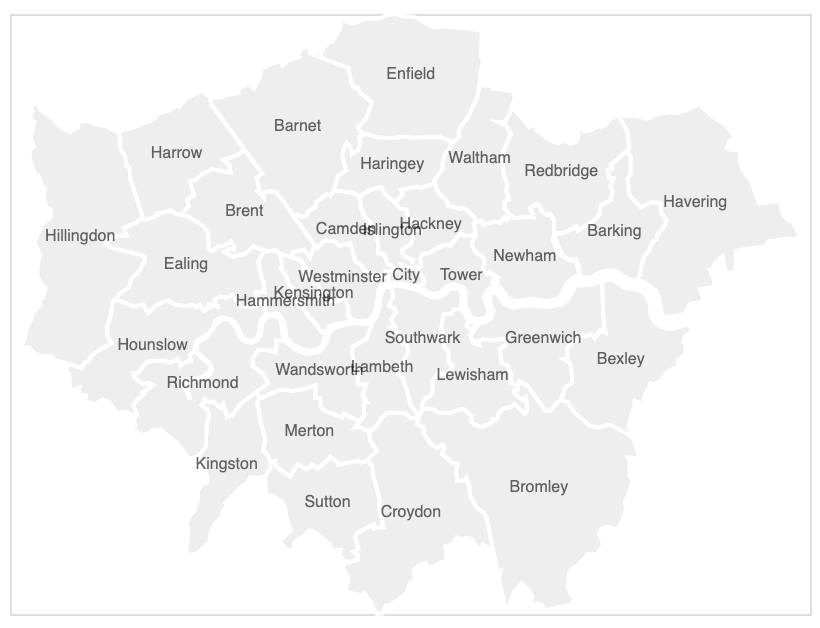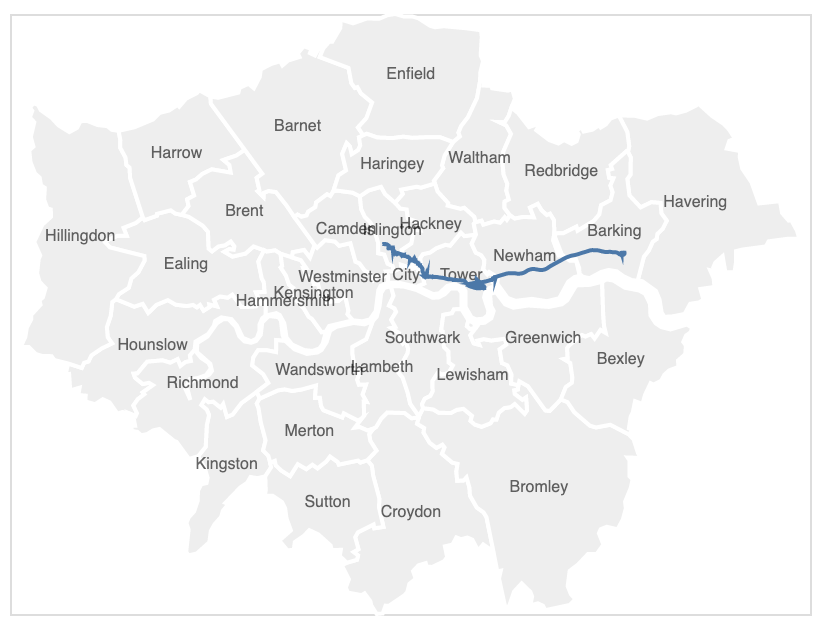I can manually find an appropriate scale but this is not automated:
long_domain = source['longitude_degs'].agg([min, max]).tolist()
lat_domain = source['latitude_degs'].agg([min, max]).tolist()
center = ((long_domain[0] + long_domain[1]) / 2, (lat_domain[0] + lat_domain[1]) / 2, )
points = alt.Chart(source).mark_line().encode(
longitude='longitude_degs:Q',
latitude='latitude_degs:Q',
order='index')
chart = (london + points).project(center=center, scale=80000)
display(chart)

When using Altair for plotting geographic objects, the visualization automatically chooses an appropriate projection. However if we overlay another object, I would like to rescale / crop the chart to have a better zoomed view
Example:
The above display returns the following image:
Where an appropriate projection has been chosen. If I add an additional object on the chart.
The projection chosen is based on the largest fitting projection. However I would like to "zoom" in on the smaller object
Something along the lines of:
But of course,
points.projectionis also undefined.Please follow these steps to make it more efficient to respond to your feature request.